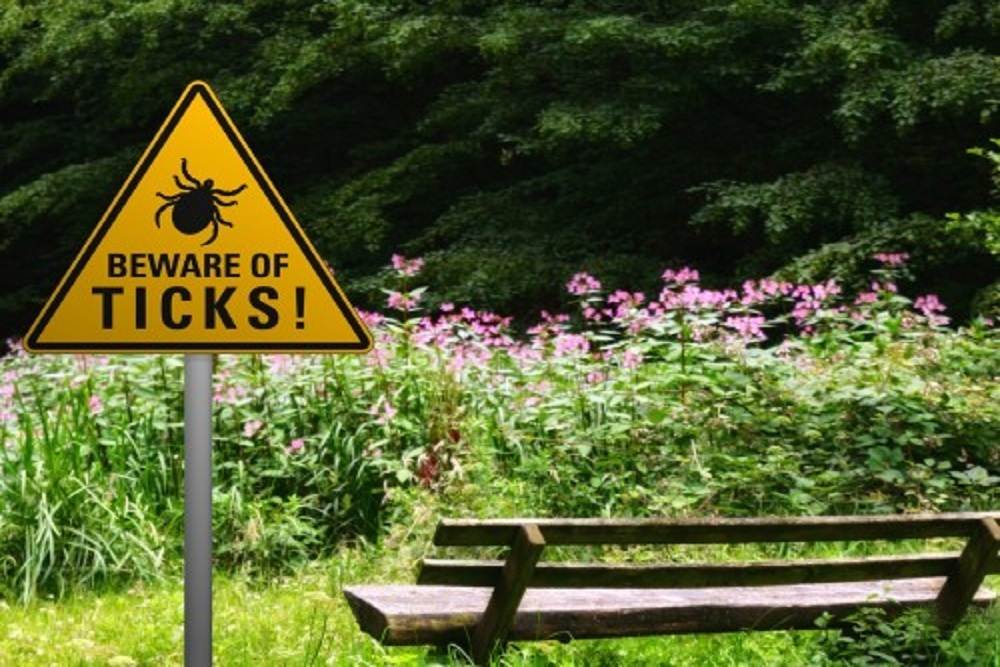While you can encounter a tick during any season, spring marks the beginning of heavy tick season, and this year, the tick population statewide is expected to continue to rise, said Tim McDermott, an educator with Ohio State University Extension, the outreach arm of The Ohio State University College of Food, Agricultural, and Environmental Sciences (CFAES).
Global climate change and tick-host range expansion are some reasons for the increase, McDermott said.
“Ticks are extraordinarily adaptable and can travel on host animals,” he said. “Ticks expand when their habitat range expands due to global climate change. They take advantage of what they can take advantage of to move to new spaces. So now, every year going forward has the potential to be bad, and you should go into each tick season thinking about how you can keep you and your family tick-safe.”
For example, 20 years ago, the American dog tick was the only tick in Ohio that was of medical importance to humans, companion animals, and livestock, McDermott said. Now, there are five ticks in Ohio that are concerns, including the American dog tick, the blacklegged tick (also known as the deer tick), the Lone Star tick, and most recently both the Asian longhorned tick, and the Gulf Coast tick, both of which were first confirmed in Ohio in 2020.
With the rising tick population comes the risk of contracting tickborne illnesses such as anaplasmosis, babesiosis, Rocky Mountain spotted fever, and Lyme disease. And in some cases, in some people, Lone Star ticks can cause an allergy to red meat after the person is bitten by the tick.
“In Ohio, ticks are most active from April through September, although they can be active any time of the year,” he said. “It’s not just walking out in the woods when you can encounter ticks. Some can do fine in a pasture, hayfield, or even your backyard lawn.”
McDermott said that while the risk of encountering ticks in Ohio is high, and the number of ticks that are carrying disease is high, there are things people can do to keep themselves safe. One way to control ticks is through proper management of their habitat.
“Keep your yard mowed, and do not allow brush or leaf litter to accumulate,” he said. “Remove brush, tall weeds, and grass in order to eliminate the habitat of rodents and other small mammals, which serve as hosts for ticks as well as serve as prime tick habitat.”
To prevent tick bites when in areas where ticks might be active, McDermott recommends that you should do the following:
- Wear light-colored clothes, including a long-sleeved shirt tucked into your pants and long pants tucked into your socks or boots.
- Apply a tick repellent according to label instructions.
- Wear footwear and clothing that have been treated correctly with permethrin. These can be purchased through many outfitters and clothing companies.
- Do frequent tick checks of your body while outside, and do a thorough inspection at shower time.
- Protect your pets with an anti-tick product recommended by a veterinarian.
- Keep dogs on a leash, and avoid allowing them into weedy areas.
- Do not crush or puncture it.
- Grasp the tick as close to the skin as possible using pointy tweezers, a tick removal tool, or your finger and thumb. Pull straight up and out with steady, even pressure.
- Thoroughly wash the bite site, your hands, and the tweezers or removal tool with warm soap and water.
- Place the tick in a container with rubbing alcohol or hand sanitizer. Record the day the tick was likely to have attached.
- Take the specimen with you to a healthcare professional if you develop flu-like symptoms, a rash, or anything that is unusual for you.
Original source can be found here

 Alerts Sign-up
Alerts Sign-up